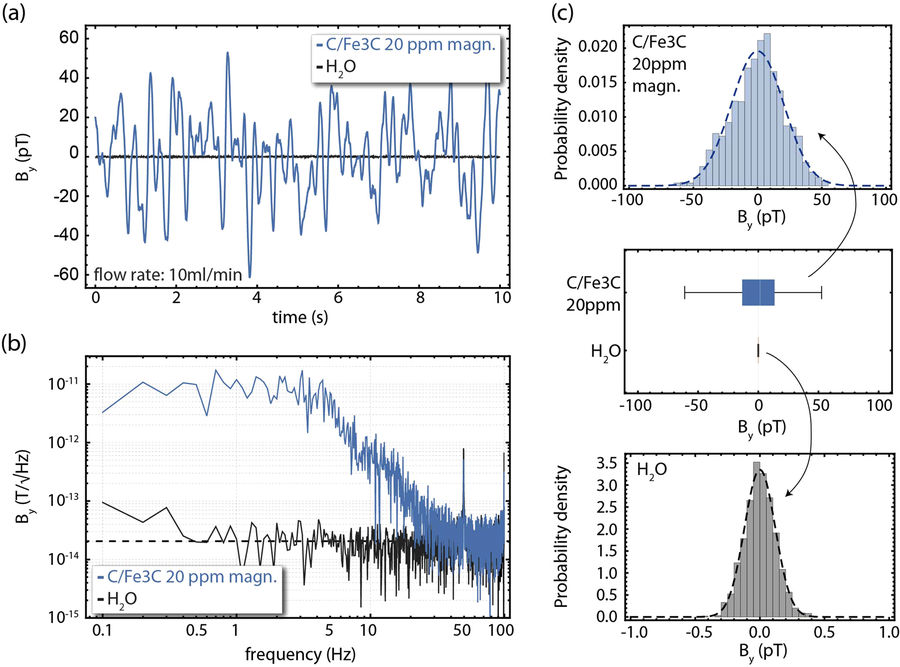A promising application of nanoparticles in medicine is magnetic nanoparticle (MNP) based blood purification (MPBP). In this technique, MNPs are functionalized with antibodies that bind to unwanted (preselected) toxins, cells or proteins in the blood. The bound particles are then removed using a strong magnet, thus selectively filtering the blood. For safety reasons, it is important to ensure that MNPs are completely removed by the filtering process before any blood is recirculated back inside the body. The existing techniques lack sensitivity to detect trace quantities of residual MNPs. More importantly, the current techniques are indirect and destructive and thus, impractical for clinical settings.
In promising work by L. Bougas and coworkers published in Nature Scientific [1] (link), the researchers show a 1000 fold improvement in sensitivity to trace MNPs (~5 to 30 ppb w/w). The most impressive aspect of their work is that their detection modality is real-time, non-destructive and in-line. The purified blood flows through a medical grade tube which is placed next to a QZFM magnetometer which picks up a signal from any residual MNPs. This affords real-time surveillance of MPBP, thus ensuring the procedure remains safe at all times.

Figure from Ref. [1]. (a) Schematic diagram of the in-line magnetic sensor used for ferromagnetic particle detection inside a magnetic shield (QuSpin is the atomic magnetometer). (b) Diagrams for the different setups used in this work: Setup (A) uses a syringe pump for fluid displacement. Particles are additionally pre-magnetized with a ring magnet before passing the sensor. In setup (B) solvents are circulated using a peristaltic pump. The fluid can be circulated either in a closed loop without magnetization, or, by switching the three-way valves, through a high-gradient magnet that allows for the magnetic particle separation.

Figure from Ref. [1]. Detection of C/Fe3C ferromagnetic particles in water solutions. (a) Real-time magnetic-field measurements along the y-axis for pure water (black points) and 20 ppm: water solution of pre-magnetized C/Fe3C nanoparticles (blue points). (b) Magnetic field power spectra for the measurements presented in (a). The black dashed line corresponds to 20.4 fT/Hz−−−√ (averaged from 1–100 Hz), indicating the noise floor baseline of the measurement and verifying that the presence of the water does not influence significantly the magnetometer’s sensitivity. (c) Histogram analysis of the measurements shown in (a) and (b), including a box-and-whisker plot analysis for visual comparison of the observed magnetic-field distributions (the white line represents the median marker, the grey boxes the upper and lower 25% quantiles, while the grey bars represent the maximum and minimum acquired data points, including data outliers). For the histogram analysis, we employ a digital filter to remove the 50 Hz and 100 Hz power-line-related noise components. All measurements are performed under constant flow conditions, with a flow rate of 10 ml/min.